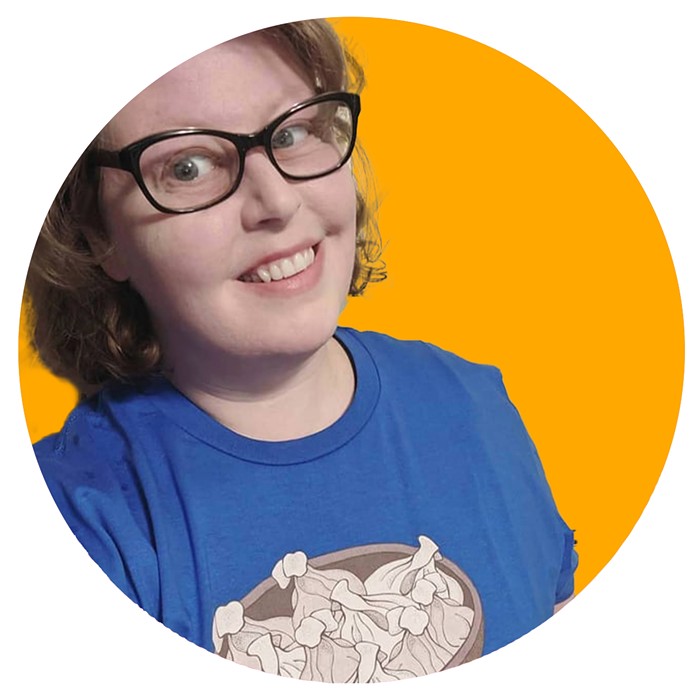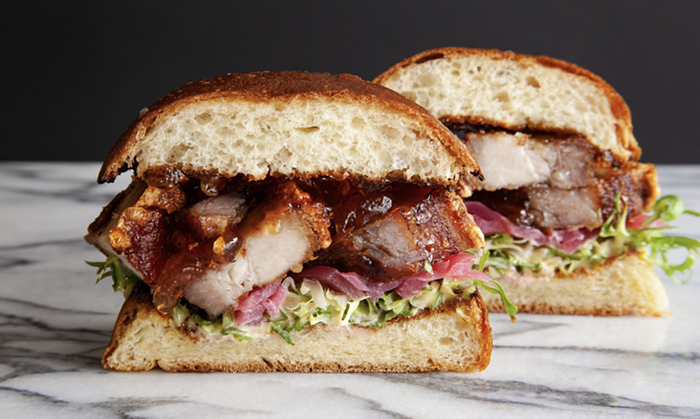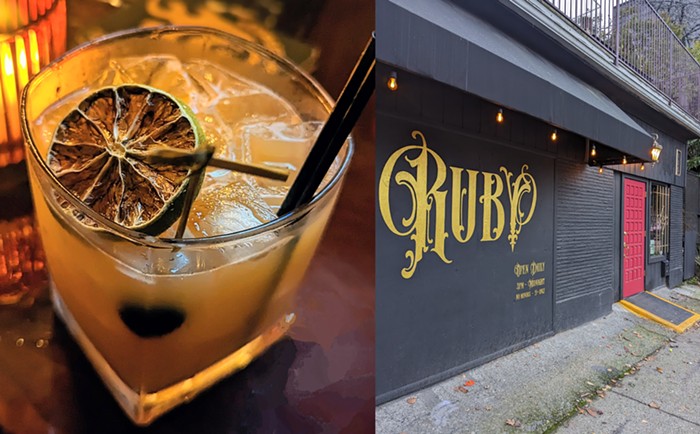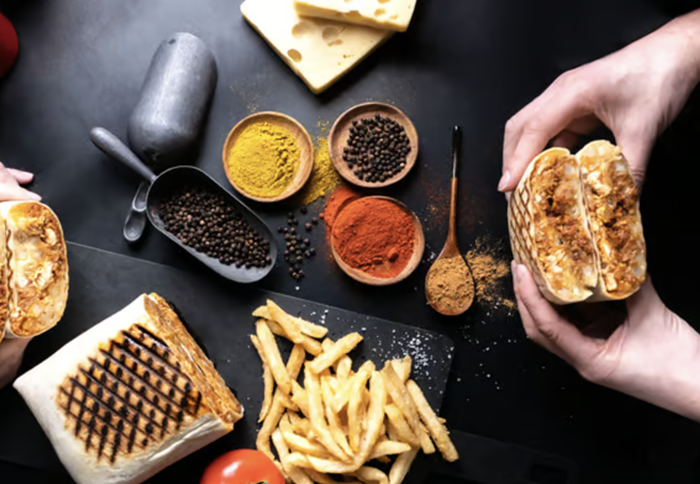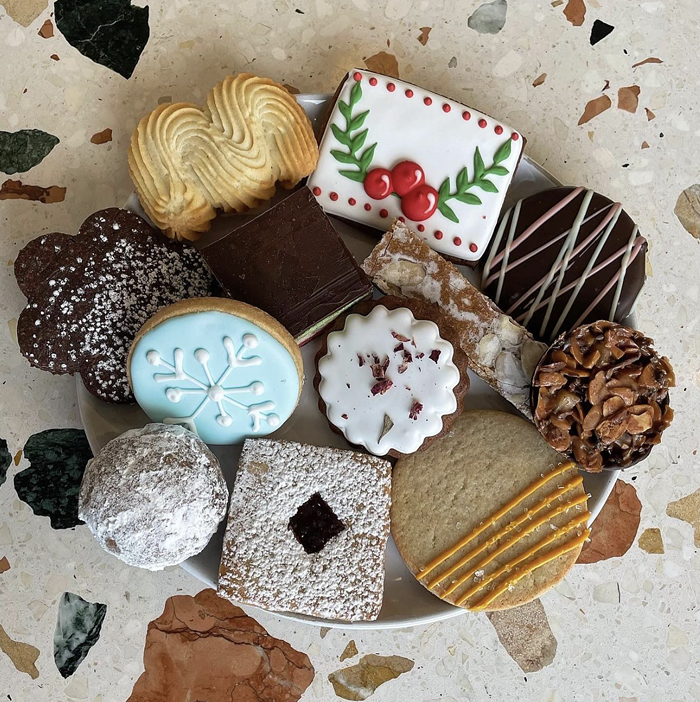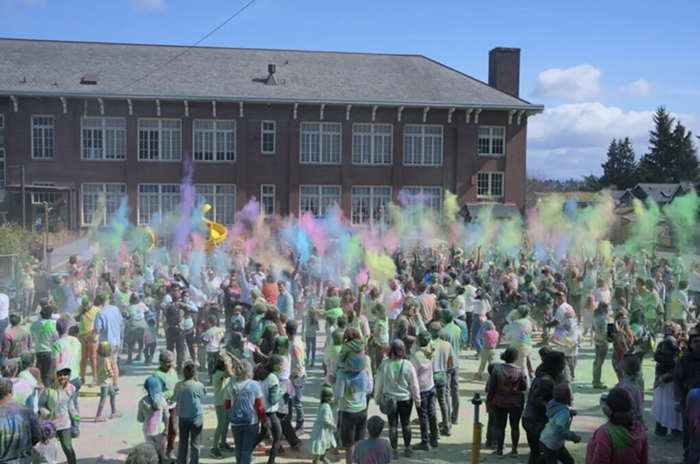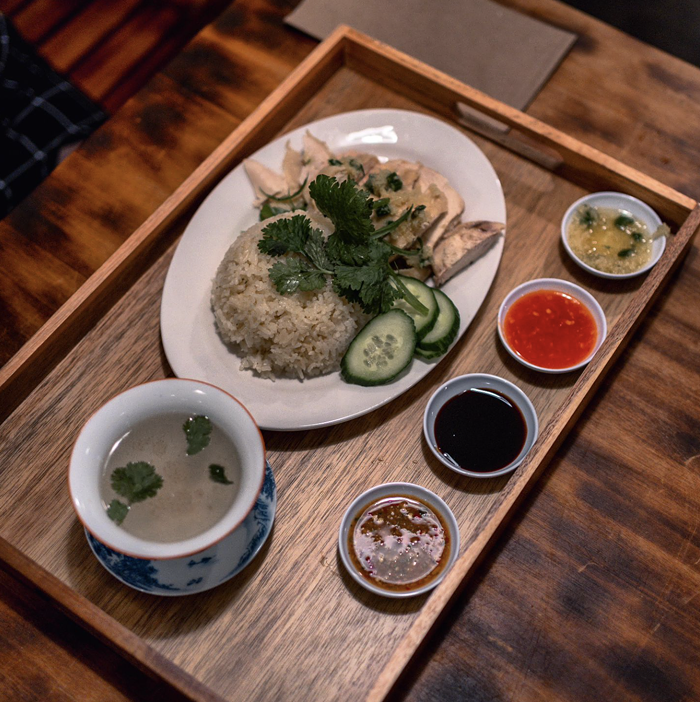
After a pandemic-related hiatus, it’s game on for the 2022 U.S. Coffee Championships this week, and it’s a real big deal in the world of haute coffee. And this year, the competing baristas from Seattle, Sam Spillman and Gray Kauffman, both hail from local fancycoffee place Caffe Vita.
Sam took home the U.S. Barista Champion title in 2019 and will compete in the U.S. Brewers Cup category this year. She’s also coaching Gray, who’ll compete in Sam’s old category, U.S. Barista Champion. The other categories in the competition are Cup Tasters, Roaster Champion, Coffee in Good Spirits (get it, spirits?), and Latte Art Champion. The show is set up like an NBA playoff, sorta, beginning with a series of prelim rounds in cities across the U.S. (this already happened), where each category’s pool of baristas is successively winnowed down and then the best players from each city face off in person at the championship. Which is what’s happening this week in Boston.
Gray will make three different coffee drinks for four judges, so they’ll make each of the three drinks four times apiece, while Sam will make a not-so-regular cup of coffee for two judges, twice per judge. Both baristas will be timed, the judges’ faces will be like a foot away from the baristas’ hands, and they’ll be graded on not only the quality of the drinks but also on things like their pouring technique and how they tamp the grounds. It’s intense.
The U.S Barista Championships scoots around to a different U.S. city each year; it’s in Boston this year, it was supposed to be in Portland last year but was COVID-canceled, and it was in Orange County in 2020. Seattle hosted in 2017. The winners from this three-day competition will compete in the World Barista Championship, held in Melbourne, Australia, this year. An American has only won the World Barista Championships twice so far, since the contest began in 2000, and never a Seattleite. So the heat is on!
Gray and Sam spent this last weekend up in the coffee lab at the Caffe Vita on 11th and Pike, practicing their skills for the public every hour on the hour, four days in a row, and all I can say is that it was fucken siiiiick to behold. The performances involved lime curd, roses, and dry ice, and the baristas had jazzy background music and did rhythmic TED-talky patter about bean origins and community and the future of coffee while they barist-ed. It was like a spoken word performance, but also you get to drink super elite, 60-dollar-a-pound coffee at the end and the whole room smells really good, unlike normal spoken word nights.
Despite it being crunch time, the two still found time to answer a few coffee-flavored interview questions, so we can get to know who we’re rooting for on Friday, and they dropped a ton of science on my ass in the process. Like, obviously, brewing is chemistry and coffee is botany, and we all knew that already, but dang. There’s so much new cool stuff to learn from their fascinating replies.

Tell me about yourself, Gray!
I’m a queer and non-binary barista originally from Colorado with a decade of experience in coffee. Currently, I’m the lead educator for Caffe Vita's cafe at KEXP with La Marzocco. I’ve dabbled in both beer and wine but found coffee was truly my drink of choice. When I’m not making coffee, I’m crushing it on the roller derby track, cooking up a magnificent storm with my partner, Kate, or lounging in the sun with my cat, Puff.
What kind of coffee are you using for the competition? What about its geography or character do you think you can bring out in your brew?
Initially, we selected a washed Geisha, grown in the Nariño region of Colombia at an elevation of 1750 meters at the La Indonesia farm by Frank Rivas Torres, whose family has been growing coffee for over 80 years, experimenting with a scientific approach to the art of producing coffee. This is the very first full Geisha crop shared from La Indonesia and the first time it would have graced the competition stage. We had a wonderful phone call with Frank about what he wanted us to share about his coffee on the competition stage, and it was so exciting! Unfortunately, the coffee got stuck in customs and didn’t get here in time. It broke our hearts. We’d formed this relationship with Frank and even started following each other on social media, talking back and forth about the coffee.
We had to completely rewrite the script just a week before the competition, but luckily, Sam had some extra of the coffee she’s using for the Brewers Cup competition. So now, I’m sharing a natural Geisha with her, grown at an elevation of 1900 meters in the Cundinamarca region of Colombia by La Palma y El Tucán, which is fermented using a process called bio-innovation.
What's your coffee story?
I fell in love with coffee for its inherent ability to find balance between art and science. As a kid in Colorado, I worked on an alpaca ranch and spent my free time cooking with my mom. As an undergrad, I studied food and nutritional sciences at SPU and learned so much of the science behind food, plus the art of its cultural uses. I’ve been working as a barista in Seattle for over a decade at Slate, Fulcrum, Hagen, Diablo Coffee, and Royal Drummer. I was the director of coffee and a food scientist for Addo:Incubator, and I have a WSET Wine Level 2 Certification and am a SCA Level 1 Certified Barista. I also dabble in home brewing and local homebrewing competitions.
My whole life has been about sharing the science behind how food is prepared, and the art that goes into our experience of it. It feels like all of my research and experimentation has led me to this moment: getting to share my passion for coffee with people who also share that passion—on a national level.

Can you walk me through the process of your signature drink?
La Palma’s innovative approach to processing inspired me to create this drink that I call Cuatras Plantas, as it’s made of four simple ingredients, all derived from plants.
To elevate the qualities innate to the espresso and create new flavors, I start with the La Palma espresso chilled to highlight acidity, then add 50 grams of guava jam that combines with the tropical sweetness of espresso to create a new flavor of watermelon. Next, I add lime curd, representing the creamy body of the espresso, which combines with the coffee’s innate tartaric acid to create a grape Jolly Rancher flavor. Lastly, I add a half gram of rosewater, to find balance to enhance these flavors.
Then I blend these ingredients together, aerating the drink to separate the flavors and create a creamy mouthfeel, mimicking that silky round tactile in the espresso. The last and final step, to embody the personality of this coffee, is to add a rose vapor, by using rose petals and dry ice, bringing that floral aroma to life. A little bit of chemistry–and perhaps magic. (wink)

Favorite coffee beverage to drink (not to make)?
Always espresso, neat. I also love to ask what the barista is digging, because they know best! I love putting trust in the person behind the beverage.

Tell us about yourself, Sam!
Hi, I’m Sam Spillman, and I’m the director of coffee for Caffe Vita Roasting. I spend most days tasting coffees and nerding out with our QC team. Even more than the science of coffee, I fell in love with the service side and its ability to bring people together.
What's your coffee story?
I fell in love with coffee for the people and ended up falling down this never-ending rabbit hole of information and science. The ultimate chase is recreating the experience to share with others.
Re: espresso, what do you think is the most important variable for a barista to control? Temp, time, pressure, grind size? Something else? Why?
Everything matters: grind size, water, temp time, pour… but for this specific brew method I’m using in the competition, I’m focusing on pour speed and weight. My brewer allows me to track my pour speed digitally, and also the weight of water and the weight of coffee out.
The tagline from your last competition is “Stop and smell the terroir,” referring to the soil, climate, and topography in which the coffee was grown. Does this still apply to your routine as you prepare for this year’s Brewers Cup competition? If so, how?
It does! It means taking intentional time to focus on the multi-sensory experience brought about thanks to the place where something was made. It means not forgetting your origins. It means taking time to honor the land that these plants were grown on. It means breaking through the cycle of cold capitalistic consumption, and into slow, intentional, rooted understandings of food and bev. We actually got hats made with this phrase on it because it means so much to me.
Can you walk me through the process of how to (correctly, in your opinion) drink coffee?
Note the floral aroma first, and then you take in the taste. The coffee is transformed from hot to cool as you drink it–while it’s hot, there is an upfront, more tart acidity, like a sour ale, and as it cools, it gets sweeter and rounder in the body. The cup selection is important in showcasing the coffee too. The experience is lost with a paper cup. I want to highlight the qualities that made the coffee so special: aroma, acidity, sweetness. So I am using a tulip-shaped ‘Sense’ glass cup created by Orea, based in the UK.
I know you’re coaching Gray this year, but who’s coaching you?
My coach is Kaley Gann, the U.S. Brewers Cup champ from 2019 and all-around badass. The coffee industry, and especially in these competitions, has always been lacking in diversity. It’s always been male-dominated. In my first competition in 2011, I was the only girl out of 27 competitors. Having leaders, specifically (2014 U.S. Barista Champion and former director of coffee at Seattle’s Cherry Street Coffee House) Laila Ghambari, got me into competition and showed me what that world is. My goal is to be the next girl to win the next barista comp.
Any people you want to thank?
Brian, my husband, is my biggest support, even when I’m up at 2 a.m. practicing. My Caffe Vita team. Deming, the owner of Vita. Kate (Van Petten, marketing director at Caffe Vita), Gray, and everyone on the Vita team for their endless support.
Favorite coffee beverage to drink (not to make)?
Espresso, always. Vanilla latte, sometimes. When I know the coffee is going to be good, I order espresso. When I’m not sure, vanilla latte.
A note for readers: Geisha coffee has nothing to do with Japanese geishas, turns out. Sometimes spelled “Gesha,” it’s a species of coffee that originated in the Gori Gesha forest of Ethiopia, although it’s now grown in other parts of the world too. These beans are known to be delicate, floral, and tealike in flavor. I had to look this up.
If you’d also like to have your ass dazzled off by coffee science, you can keep track of Gray, Sam, and the whole U.S. Coffee Championships at https://uscoffeechampionships.org/schedule-of-events. The events begin at 8:30 a.m. ET on Friday, April 8th, and the competition ends with an awards ceremony at 4:30 p.m ET on Sunday, April 10th. Seattle’s got this.
